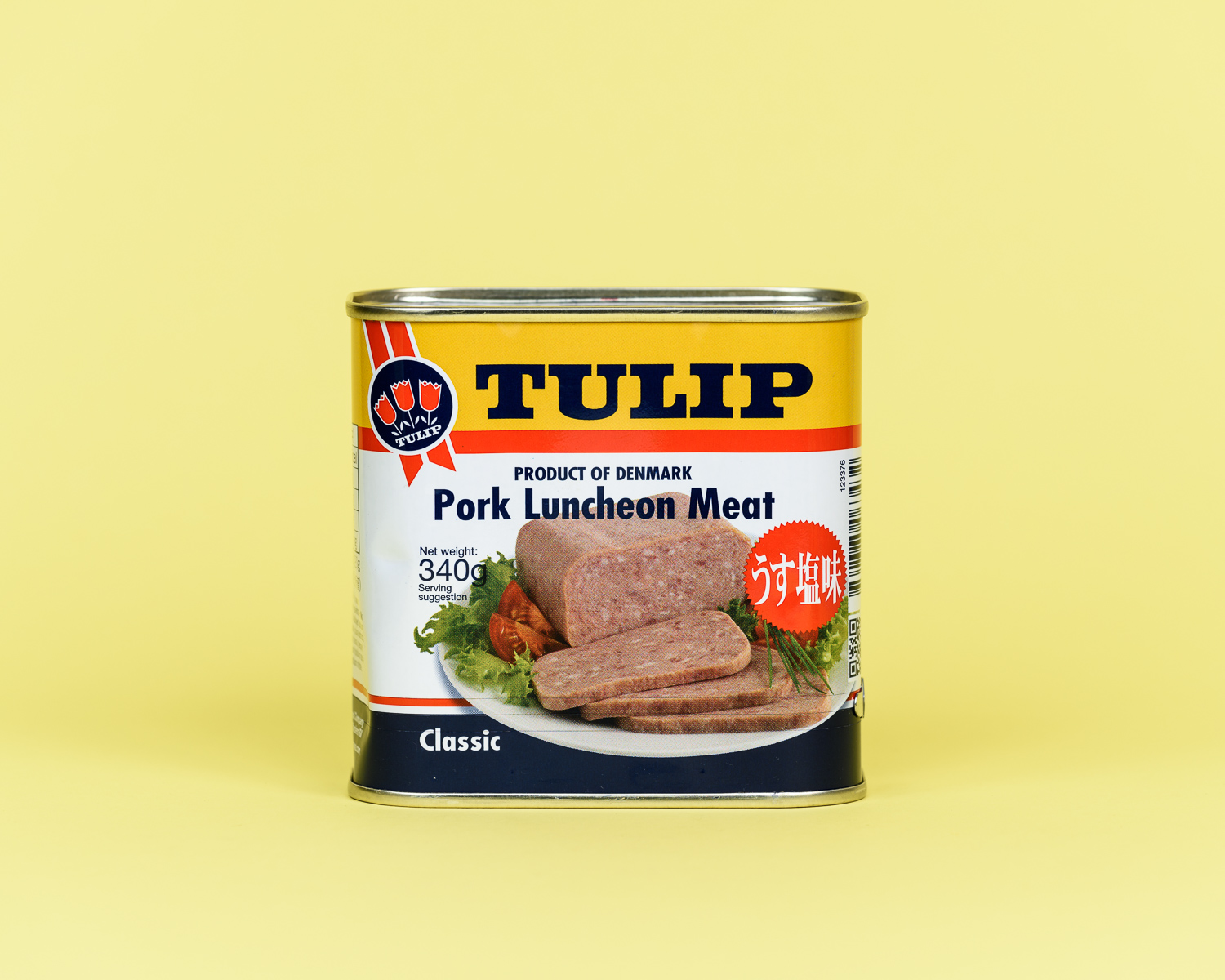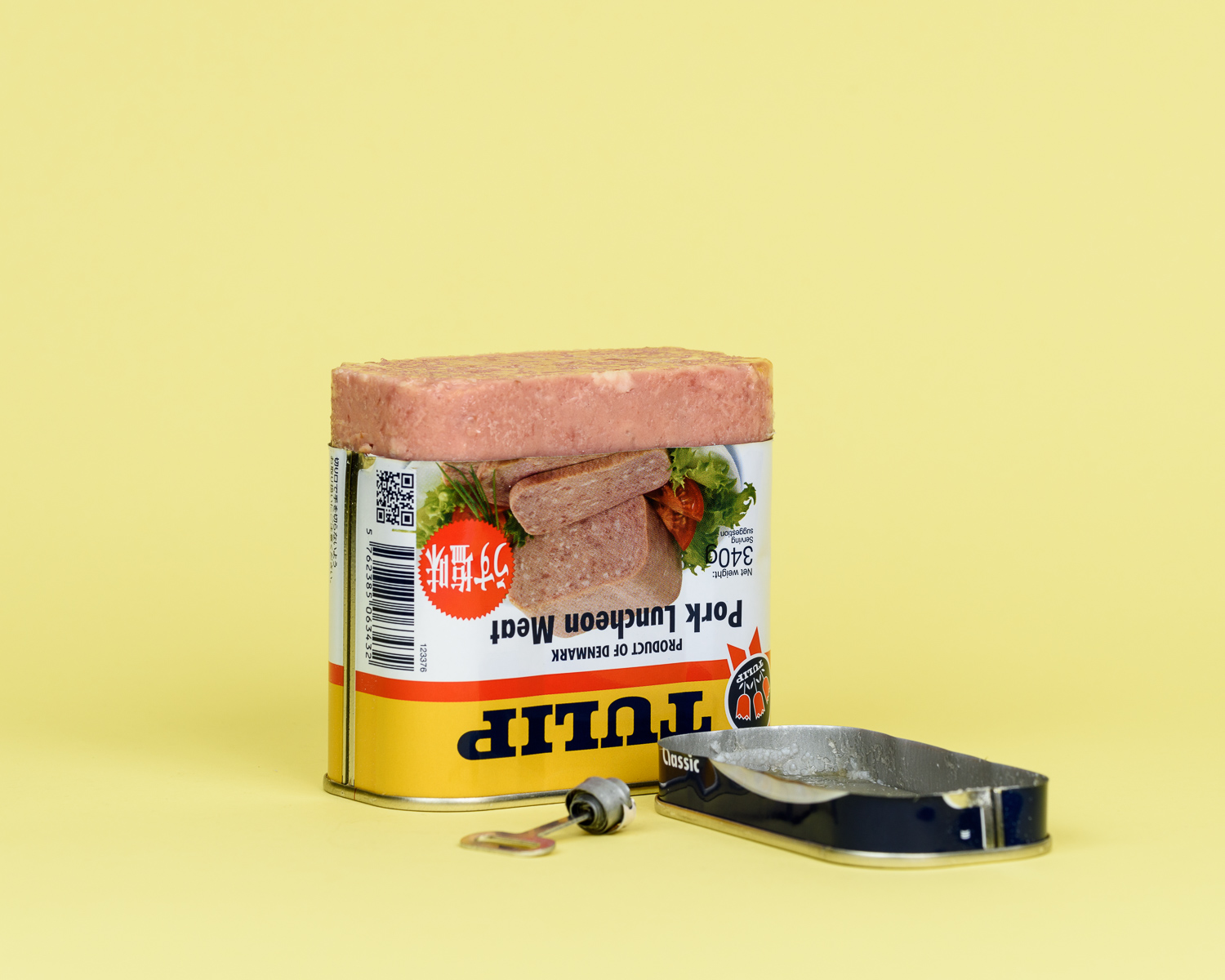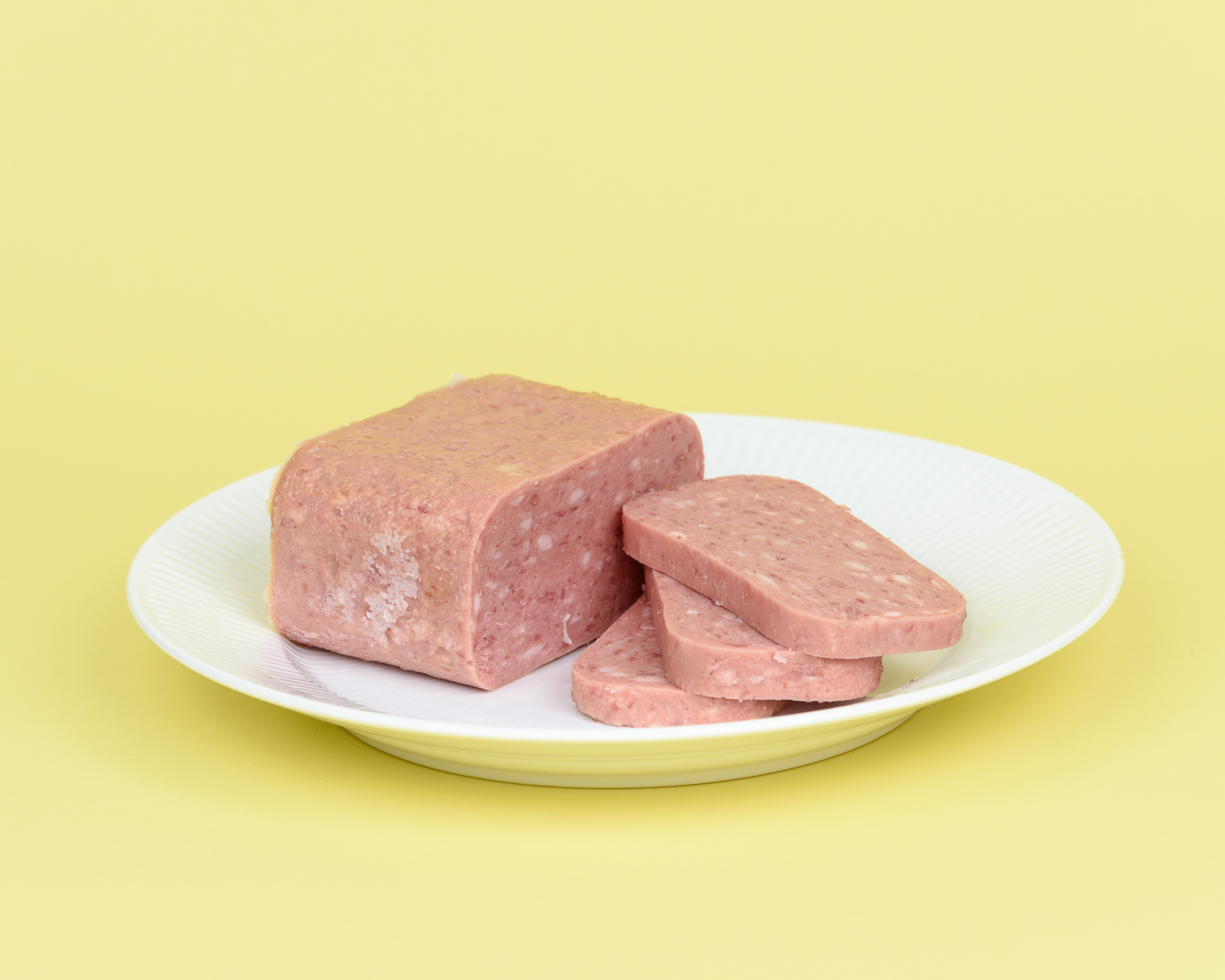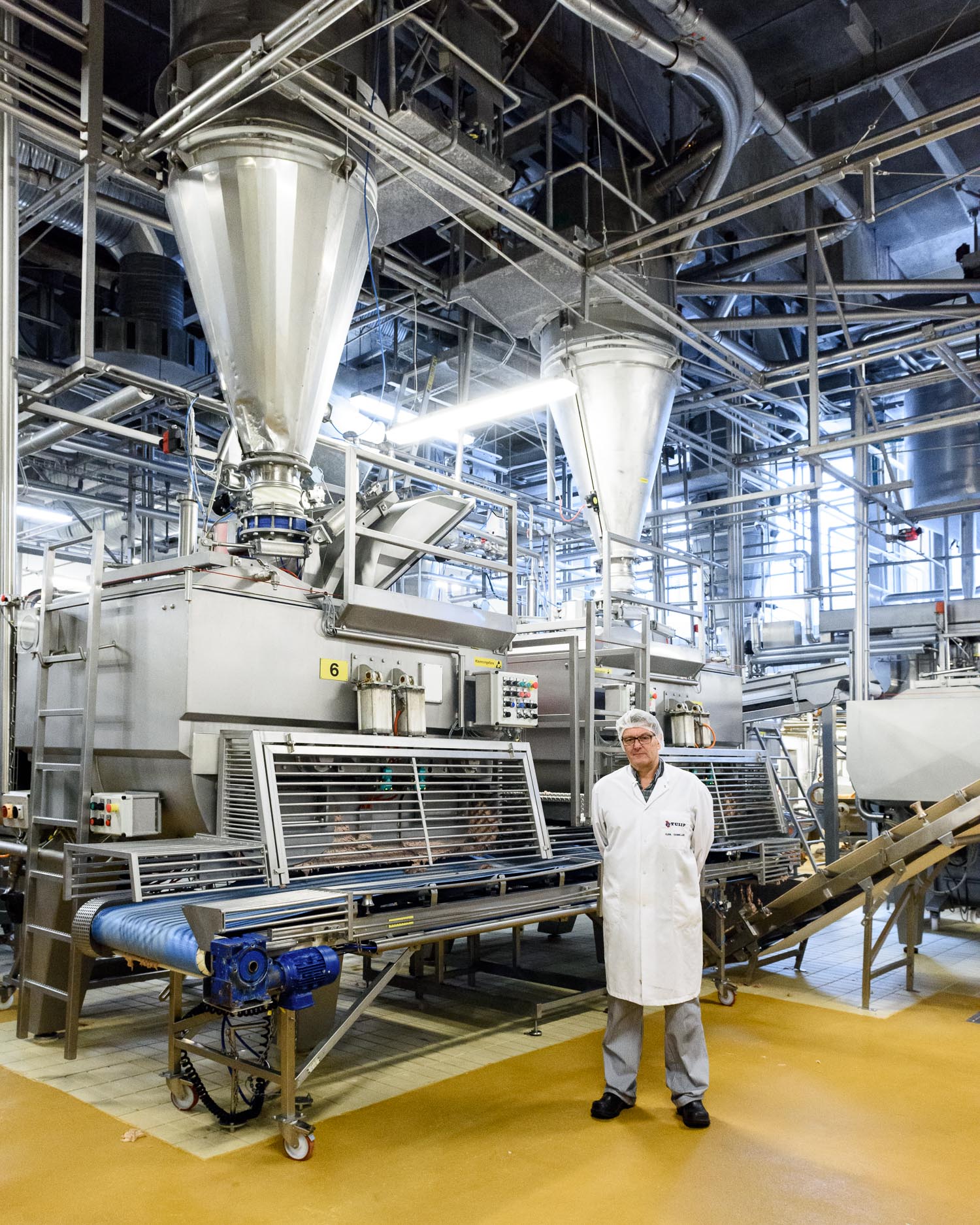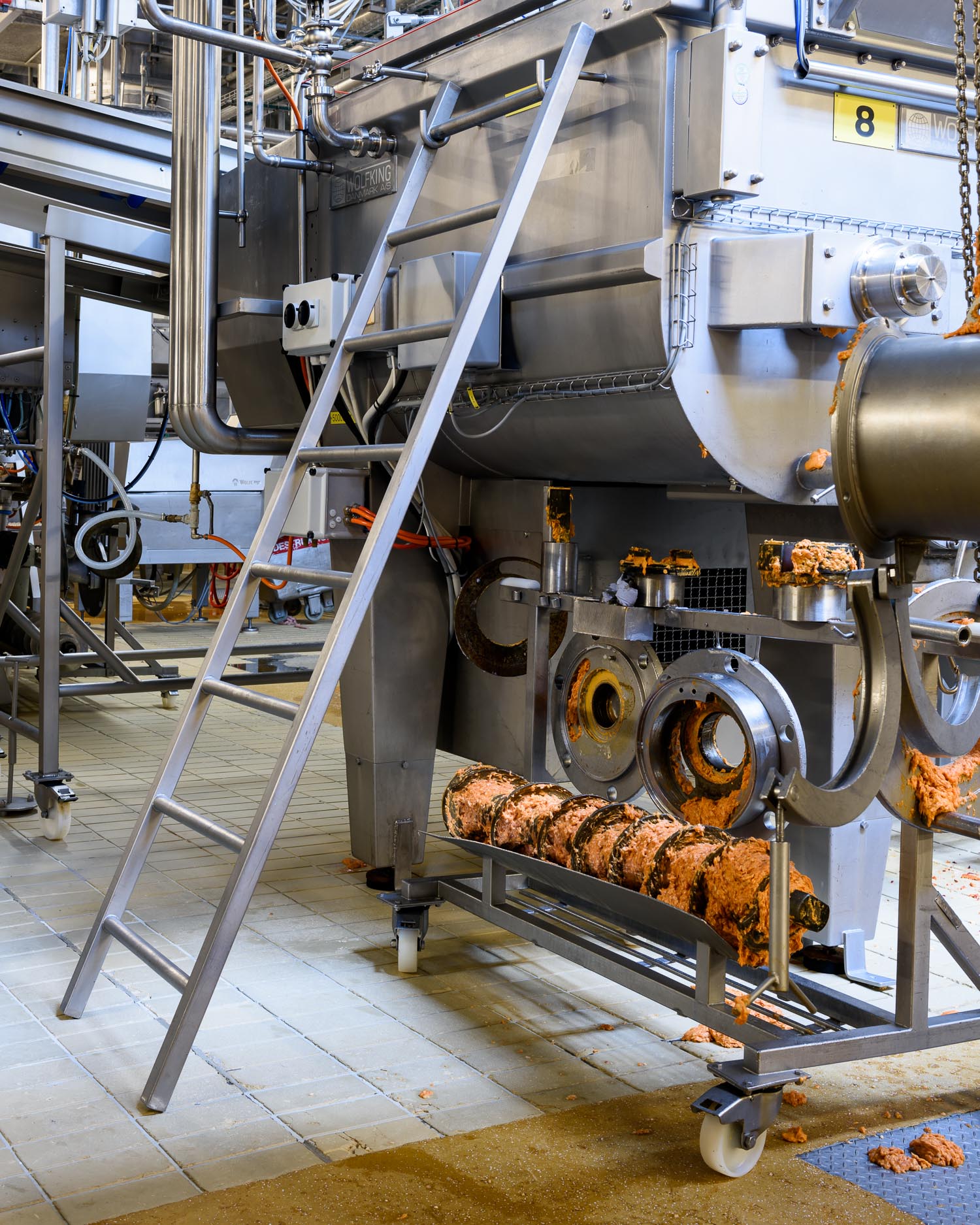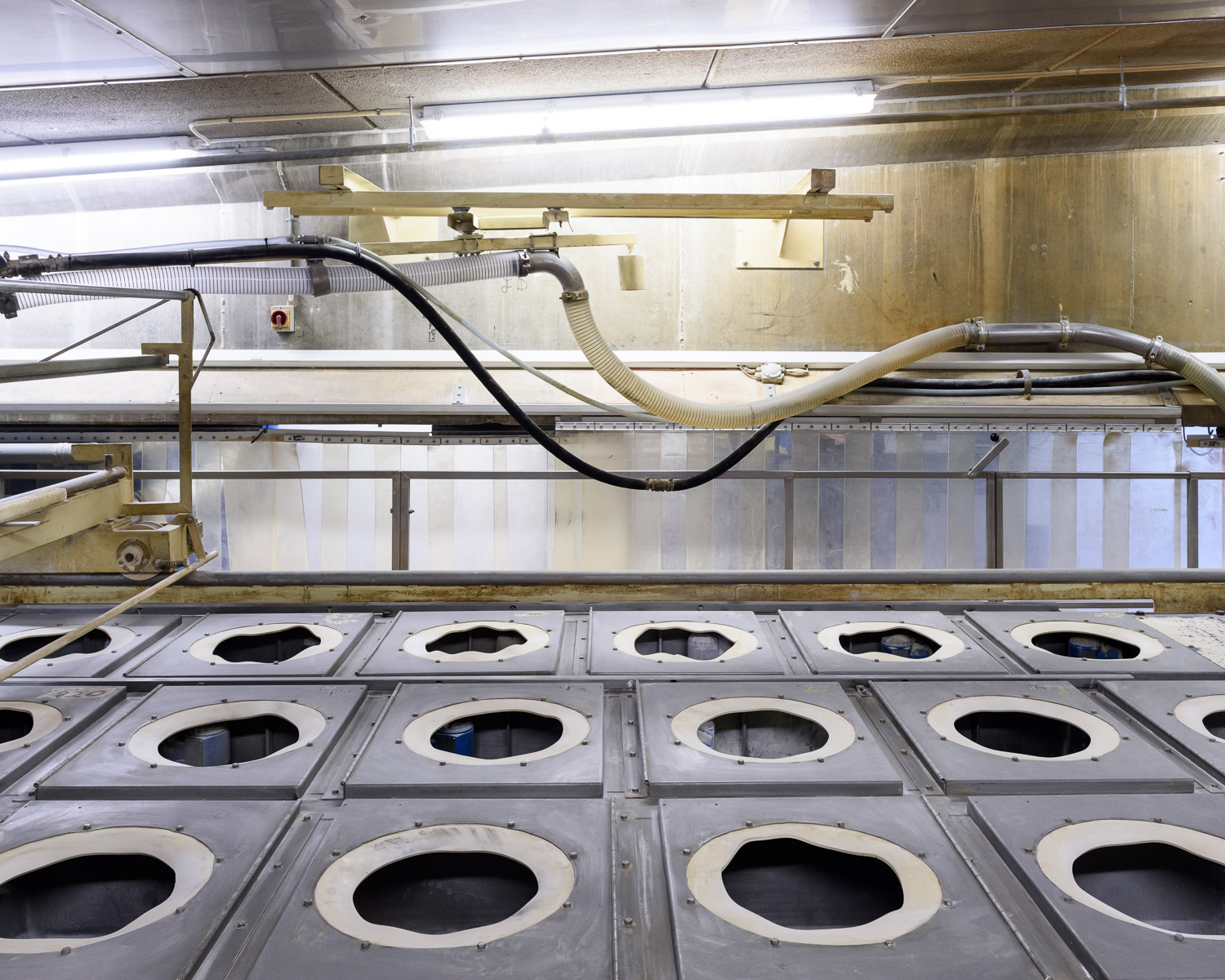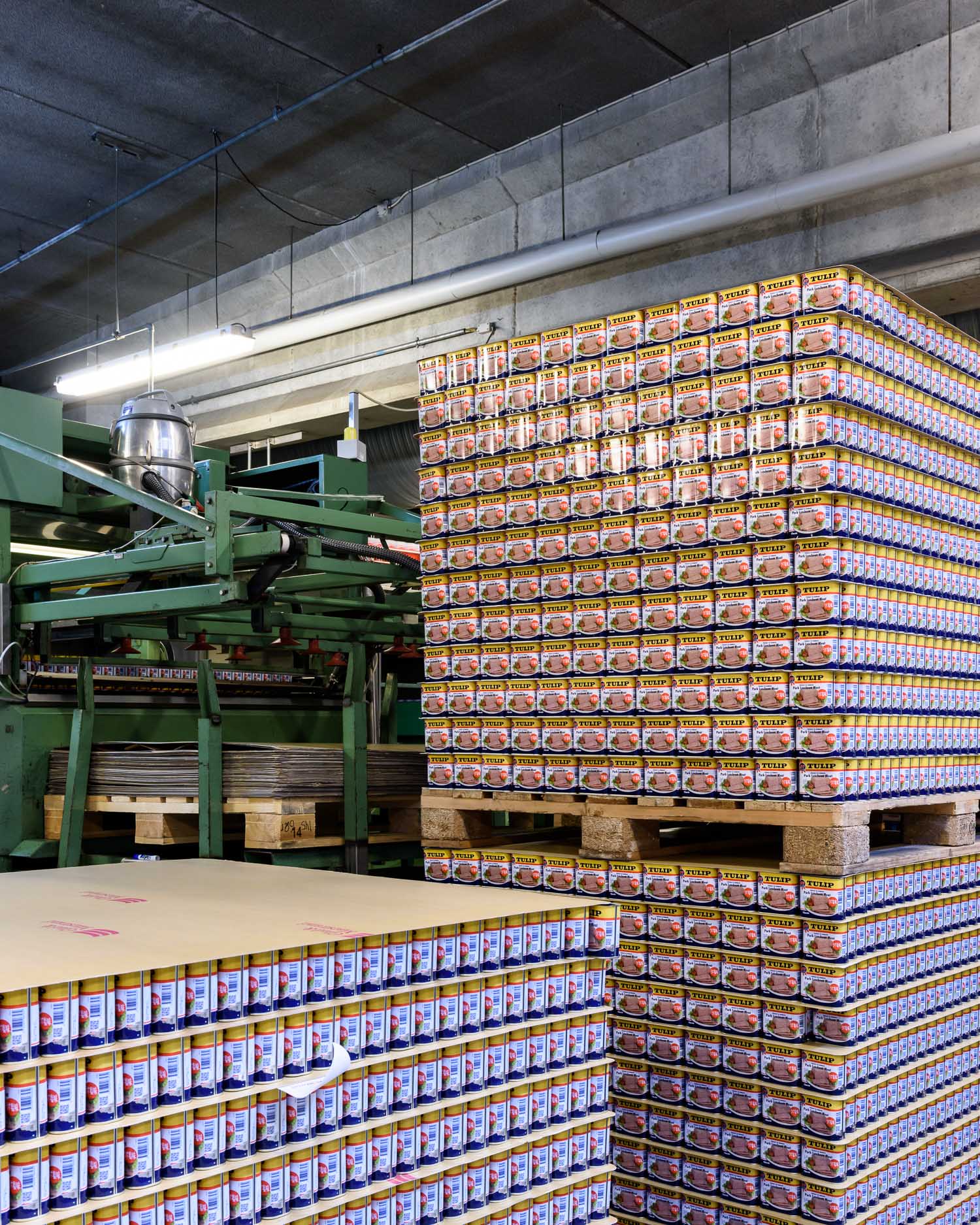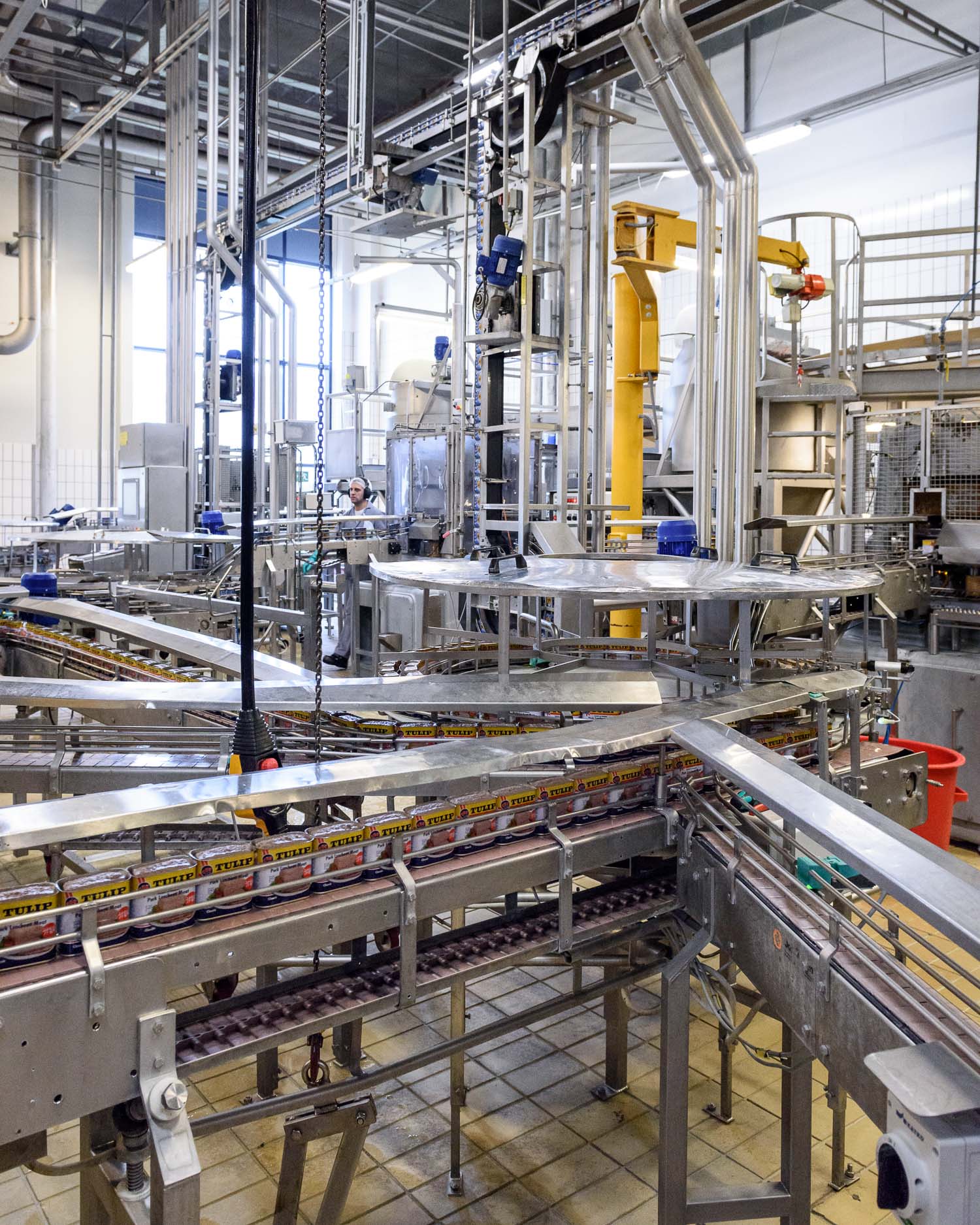Ground and mixed meat on its way to be tinned at the Tulip factory in Vejle
In my day it was all about Spam. A cultural icon worthy of ridicule by Monty Python in the 60s, and the moniker given to one of the biggest pests of the information age, this brand of humble meat-in-a-tin was the renowned - if rarely proudly eaten - household name when I was growing up in England in the 80s. But throughout much of the rest of the world, meat-in-a-tin is known equally by another name: Tulip Pork Luncheon Meat.
“It’s very much the same thing as Spam,” explains Stig Pedersen, plant manager at the Tulip's factory in Vejle, Denmark, where over 130 million cans of Pork Luncheon Meat are produced each year. "We are actually competing with the Spam brand worldwide - for instance in Okinawa we are big competitors."
From this factory, which opened in 1988, Pork Luncheon Meat is exported to over 100 countries.
"Sales are going up all the time. Canned products are not very sexy in Denmark - we only really use tomato and Tuna and a few other things,” continues Stig. "The product Pork Luncheon Meat is not a familiar product in Denmark at all - most Danes wouldn’t know what it is if you asked them. But outside Denmark it is very well known. In England and Germany canned products are huge, and then we have very big markets in places like Okinawa, Korea, Panama, Puerto Rico and Papua New Guinea."
Not only is Pork Luncheon Meat well known abroad, it is often considered a delicacy. Wherever American troops have been stationed, they have brought Spam and Pork Luncheon Meat with them - its high protein and fat content, and shelf life of at least 5 years, has always made it a very practical addition to ration packs. In Vietnam, one of the countries with the most vibrant cuisines in the world, slices of Spam wrapped in banana leaves sit in the middle of the table at many local restaurants. The story goes that during the war with the Americans the Viet Cong would steal their supplies and discovered Spam - which they promptly acquired a taste for. Apparently there is nothing better to warm the cockles of an old timers heart in Vietnam than to give them the gift of a tin of Spam.
“It’s true - in Vietnam, they sometimes have alarms attached to the tins in the stores to stop people stealing them” says Michael Ravn, head of communication at the Tulip company. "The same happened in Okinawa - the American troops had it in their ration packs - and now Okinawa is one of the biggest markets, where Pork Luncheon Meat is regarded as a delicacy. In Japan it is very common to use Pork Luncheon Meat as a gift for the host when you visit friends and family - they make gift boxes of Pork Luncheon Meat that you can bring in the same way that we would bring a nice bottle of wine."
"They also do that in Korea” adds Stig. "A lot of the niche markets we are in are because of the presence of American troops, and that’s how the locals started to eat Pork Luncheon Meat. There are 1.5 million people living in Okinawa, and they consume 3500 tons of Tulip Pork Luncheon Meat per year - and they also eat Spam on top of that. If you measure per head, Okinawa is our biggest market. It is amazing how much they eat.”
It just so happens that the people of Okinawa have a life expectancy that is among the highest in the world. “I guess that’s because of our products,” laughs Michael. In Okinawa you can buy Hawaiian shirts with prints of tins of Tulip Pork Luncheon Meat all over them, and Stig shows me a photo of a t-shirt he found in the airport with a picture of a pig with a cross through it saying “No", and underneath a picture of Pork Luncheon Meat with a big tick next to it saying “Yes”.
There is also the problem of fake tins of Pork Luncheon Meat coming from China into the Asian market. “They look identical to ours,” says Michael. “I don’t even want to think what they put in there. But it goes to show how popular it is.”
The off-cuts of meat arrive from the slaughterhouse in these metal bins. You see my series from the slaughterhouse in Horsens, the main supplier to this factory, here
The popularity of Pork Luncheon Meat doesn’t stop in Asia. "One of our export consultants went on a boat trip up the Amazon River, and sometimes there are small piers where you buy gas for your boat. You can also buy Coca-Cola, and Tulip Pork Luncheon Meat. Just those three products. Our products are also very popular in shelters, so when hurricane season comes along our sales go up.”
The meat is roughly chopped
So, what exactly is Pork Luncheon Meat, you may be wondering? It’s all ground up eyeballs and testicles right?
“No” says Michael with a smile. "This is great quality meat. We are not putting eyes and testicles in there - it is high quality, and that is why it is so extremely popular. Around the world there is a perception that at Tulip we have world-class standards regarding food safety, and people know that it is high quality meat. We like to call ourselves world champions of food safety. We have every kind of international certification you can get - that means a lot for consumers around the world - and being "Danish” is associated with high quality and safety.”
Stig explains: "We buy what are called “trimmings” from the slaughterhouses - the bits of meat that are cut away by the butchers from the main cuts. They are perfectly decent bits of meat, they are just too small to be sold on their own as part of the main cut. That is what Pork Luncheon Meat is made of. It includes ham, shoulder, shank, tenderloin, loin, belly and other normal cuts of pork.” The biggest supplier to the factory in Vejle is the slaughterhouse at Horsens, which I have also photographed - check out how the process goes from pig to pork here.
“In general terms, we get the cuts of meat, mince it, put it in a can, and that’s it” adds Michael. "Everything is traceable, which is important for our customers. You can take a Tulip can in Vietnam and with the code we can go back in the system and find out everything about what has gone into that can within 4 hours. Not only the meat, also the spices. Everything is traceable. It is an honest product."
The pork waterfall. The meat is salted and sorted into trays according to fat content
Pork Luncheon Meat has an expiration date 5 years from the date it was produced. “Ejgil Gammelgaard, a technical consultant who has been here for 30 years, has been opening cans that are 15 and 20 years old and tasting them, and they are edible,” says Stig.
"Perhaps they have a slightly metallic taste, but in terms of food safety it is not a problem. So as long as the can is intact, they can easily go much longer than 5 years. Some of our customers, retailers, they would rather we only gave 3 years life because they thing people will perceive it as a better product.”
The long life of the product is attributed to a combination of the addition of food safe preservatives, the vacuum sealing of the tins, and the heating of the meat to a temperature that kills off all traces of bacteria.
A fat scanner measures the fat content of the trimmings and then they are placed in small trays of 30kg. When the final recipe is made, trays are selected by robots depending on their fat content to make sure the right fat content is achieved
"We don’t have anything to hide,” says Michael. "There is nothing that needs to be swept under the carpet, so why not be open about it? We are not shy or embarrassed about what we do - actually it is the opposite, we are proud of these facilities and our products. We are aware if the fact that here in Denmark, canned meat is not perceived as a delicious, high end product - but it is in other parts of the world. We think it is a really good product."
"Even though the cans are not so sexy,” points out Stig.
"I think they are,” replies Michael.
Meat is both coarsley ground and finely ground, and then these grinds are mixed to achieve the perfect consistency. This is meat going through the coarse grinder
Our idea of industrial scale food production, especially when it comes to meat, is a complicated one. Most people, Danes in particular, are happy to devour frankfurters like they are going out of fashion, and yet grimace at the idea of a product like Pork Luncheon Meat.
“We also make sausages here, and at our other factories,” explains Stig. “They are made in basically the same way as Pork Luncheon Meat, the only difference is that one goes into a skin and ends up as a sausage, the other one goes into a can.”
What I saw at the factory in Vejle, while perhaps being slightly unappetizing due to the sheer scale of the endeavor, was very simple and clean. Pieces of pork go in, get minced up, spices and food safe preservatives are added, it gets put in a tin, sealed and cooked.
Very finely ground meat is mixed with roughly ground meat
So, I need to taste some, right? Yeah? That’s what you want isn’t it?
While shooting the still lifes of the tins in my studio, I began to psych myself up. I’ve been to the slaughterhouse where the pigs are slaughtered and butchered, and then I have been to the factory where the meat is turned into this product. I am not squeamish, and I have been satisfied, perhaps even impressed by the safety and cleanliness of the process. So why do I need to psych myself up? I guess, confit de canard excluded, meat in a can just really isn’t that sexy after all.
I call my wife into the studio to give me support and witness the tasting. “What is that smell?” is her first comment. It’s true, there is a certain aroma, lingering somewhere between memories of 80s school dinners and dog food. I explain my mission to her. “Why the hell do you want to do that?” she asks, looking horrified. As I waffle about sense of adventure and journalistic integrity, I can feel my determination slipping. “Why don’t you at least cook it?” she asks. “Do you really have to eat it straight from the tin?” She’s got me there.
With a sense of relief, on goes the cling film; into the fridge the Pork Luncheon Meat disappears. It is sitting there now, waiting to be turned into a delicious appetizer to this evening’s meal.
Or is it?
Pork Luncheon Meat before being tinned and cooked
Originally shot for Munchies Denmark.
Disclaimer: I am not in anyway affiliated to Tulip or its sister company, Danish Crown. They have very kindly given me access to their facilities, and I thank them for that.
Dealing with the controversial subject of meat production, I am also painfully aware of the very valid discussion about whether the world should be eating as much meat is it does (it shouldn’t), and how the pigs that end up in Pork Luncheon Meat have lived their lives. While acknowledging the crucial importance of this aspect, I do not know anything about it and nor am I qualified to give an opinion on what is a good, bad or acceptable life for a pig. Maybe that is a project for the future. But for now I just want to give a small insight into the production of these products that people know very little about.


